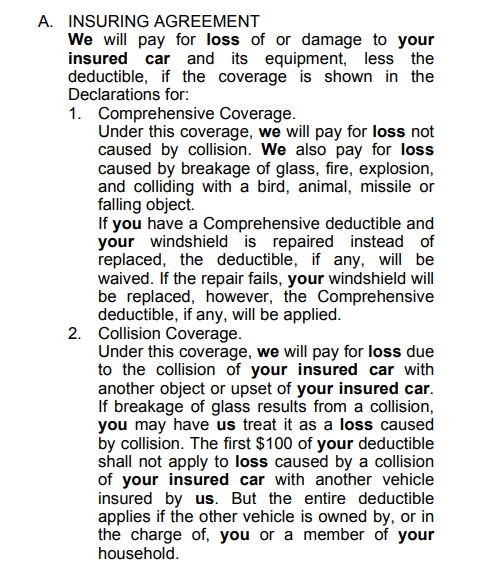The 25-Second Trick For Pacific Prime
The 25-Second Trick For Pacific Prime
Blog Article
About Pacific Prime
Table of ContentsThe Best Guide To Pacific PrimeA Biased View of Pacific PrimeRumored Buzz on Pacific PrimeThe Buzz on Pacific Prime
In the majority of states, the insurance provider is called for to send you a copy of the changes to your policy. It is very important that you check out Recommendations or Bikers so you comprehend just how your plan has actually altered and if the policy is still adequate to satisfy your demands. To get a duplicate of your insurance coverage, please contact your insurance coverage representative or firm.
The Institute of Medicine (IOM) Board on the Repercussions of Uninsurance launches an extensive assessment of proof that addresses the relevance of wellness insurance policy protection with the magazine of this report. Protection Matters is the initial in a collection of six reports that will be issued over the following 2 years recording the fact and repercussions of having an estimated 40 million individuals in the United States without medical insurance coverage.

What Does Pacific Prime Do?
The objective of this series of research studies is to redouble plan focus on a historical trouble. Adhering to the lengthiest financial development in American background, in 1999, an approximated one out of every six Americans32 million grownups under the age of 65 and more than 10 million childrenremains uninsured (Mills, 2000).

Ten percent of the population make up 70 percent of health and wellness treatment expenses, a correlation that has actually continued to be constant over the past 3 years (Berk and Monheit, 2001) - international health insurance. Thus health and wellness insurance continues to offer the feature of spreading out risk also as it increasingly funds routine treatment. From the point of view of healthcare companies, insurance policy carried by their clients helps safeguard a profits stream, and neighborhoods gain from financially sensible and stable wellness treatment specialists and establishments
Government offers health insurance coverage to populaces whom the private market may not offer effectively, such as handicapped and seniors, and populaces whose accessibility to healthcare is socially valued, such as children and expectant ladies. The ultimate ends of wellness insurance policy coverage for the individual and areas, including workplace communities of employees and companies, are improved wellness outcomes and lifestyle.
The smart Trick of Pacific Prime That Nobody is Talking About
Employees place health insurance policy first by much in importance among all the benefits supplied in the workplace (Salisbury, 2001). There have actually been substantial investments of personal and public funds to offer wellness insurance coverage, many people still have no insurance coverage. Despite considerable coverage of survey findings and healthcare research study results, the public continues to be baffled and misinformed about Americans without wellness insurance and the effects of doing not have insurance coverage.

Without concern, the intricacy of American healthcare funding mechanisms and the wide range of sources of details contribute to the public's confusion and skepticism about health and wellness insurance stats and their analysis. This record and those that will certainly comply with aim to boil down and provide in easily understandable terms the substantial research that bears upon inquiries of medical insurance protection and its value.
Fifty-seven percent of Americans surveyed in 1999 believed that those without wellness insurance coverage are "able to obtain the treatment they need from doctors and health centers" (Blendon et al., 1999, p. 207). In 1993, when national interest was focused on the problems of the uninsured and on pending healthcare regulation, simply 43 percent of those questioned held this belief (Blendon et al., 1999).

They also get fewer preventive services and are much less most likely to have regular look after chronic conditions such as hypertension and diabetes. Persistent illness can cause expensive and disabling issues if they are not well handled (Lurie et al., 1984; Lurie et al., 1986; Ayanian et al., 2000). One nationwide study asked even more than 3,400 adults regarding 15 extremely severe or dark problems.
Pacific Prime - Truths
Extra proof is offered later on in this phase in the conversation of insurance coverage and access to health care. https://yoomark.com/content/we-are-award-winning-insurance-intermediary-choice-simplifying-world-insurance-help-you-find. Individuals without medical insurance are young and healthy and select to do without coverage. Virtually fifty percent (43 percent) of those surveyed in 2000 believed that individuals without medical insurance are more likely to have health issue than people with insurance
Citizens and plan makers in emphasis team conversations identify those without insurance coverage as young individuals who have the chance to be covered and feel they do not need it (Doorperson Novelli, 2001). Compared to those with a minimum of some personal protection, the without insurance are less most likely to report remaining in superb or excellent health and wellness (Agency for Medical Care Research Study and Quality, 2001).
SOURCE: Facility for Expense and Funding Studies, Company for Healthcare Study and Quality, based on MEPS data. Young person in between 19 and more 34 are even more most likely to lack medical insurance than any type of various other age group. This is mainly since they are less commonly qualified for employment-based insurance because of the nature of their work or their brief tenure in it.
The perception that people without insurance policy have better-than-average health complies with from perplexing the fairly young age account of the without insurance with the much better wellness, typically, of younger persons. This obscures the link between health status and health insurance. For those without access to office health insurance coverage, bad health and wellness is a potential barrier to acquiring nongroup coverage because such coverage may be very valued, leave out preexisting conditions, or be simply unavailable.
Report this page